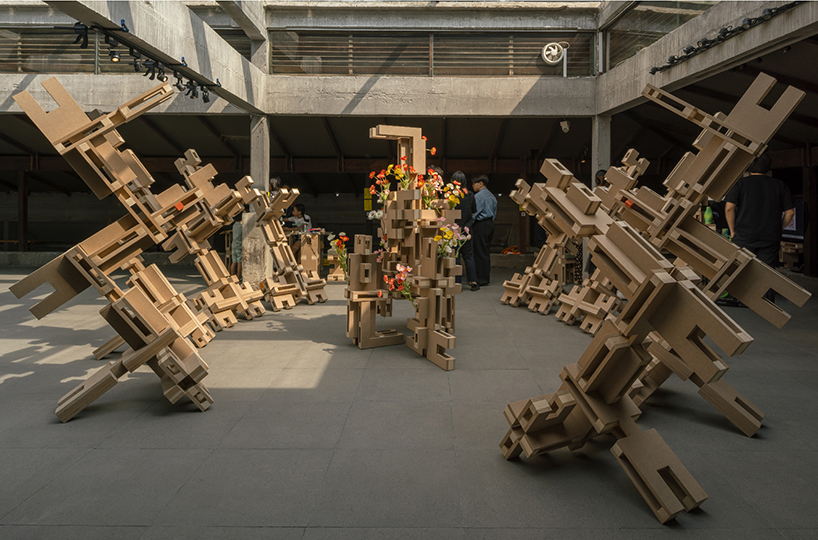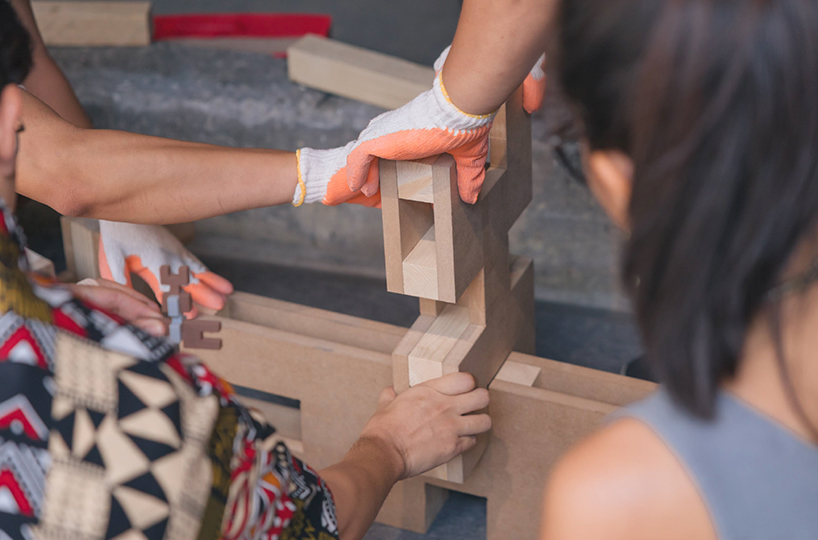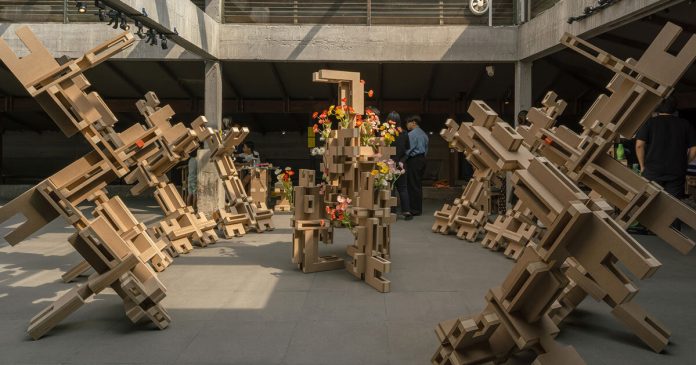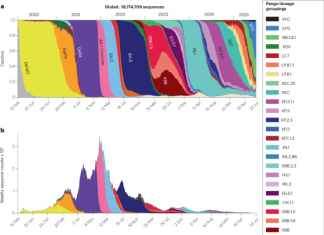HXL Modular System Adapts from Sculpture to Functional Design
HXL is a modular assembly system developed by Super.Natures, the exploratory design division of Integrated Field Co., Ltd. Originally conceived as a sculptural installation for Bangkok Design Week 2025, the project investigates how modular, tool-less structures can transition between artistic, architectural, and domestic applications. Composed of three interlocking components, H, X, and L, named for their alphabetic profiles, the system functions as a spatial language scaled to the human body.
Following its debut, the same modules are reconfigured into furniture, symposium seating, exhibition partitions, and adaptive signage, as well as integrated with a home speaker system. Each transformation demonstrates the system’s capacity to evolve through reuse, presenting a model for design that remains responsive rather than fixed.
Fabricated from CNC-cut composite sheets and pine wood studs, HXL applies principles of precision and simplicity. The structure relies on friction-fit connections rather than mechanical fasteners, allowing assembly without tools. Each alphabetic form contributes both structural and visual identity, combining compression, tension, and openness within a single family of parts.

HXL is a modular assembly system developed by Super.Natures | image by W Workspace
Super.Natures’ HXL System enables Continuous Design Evolution
The modular elements can be assembled and disassembled repeatedly, enabling continual experimentation with form and scale. The process encourages participatory construction, where builders engage directly with the system through intuitive handling and spatial improvisation. Digital fabrication ensures accuracy, while manual assembly introduces variation, producing results that remain consistent in logic yet distinct in expression.
Beyond its physical flexibility, HXL operates as a framework for adaptive design. Through successive reconfigurations, ranging from public installations to functional interior elements, the system demonstrates how a limited set of components can sustain relevance through ongoing reinterpretation. Each configuration extends the vocabulary of the system, testing its structural and spatial capacities in new contexts. Over time, HXL by computational design studio Super.Natures evolves as both a method and a medium, representing a design approach defined by adaptability, reuse, and continuous growth.

HXL explores how tool-less modular structures can shift between artistic, architectural, and domestic contexts

the system is composed of three interlocking components, H, X, and L, named for their alphabetic profiles








